 1996 Mazda 121 III (JASM,JBSM) Dimensions, Size & Specs
1996 Mazda 121 III (JASM,JBSM) Dimensions, Size & SpecsMeasurements of the 1996 Mazda 121 III, engineered for optimal performance and comfort
| Dimensions | |
|---|---|
| Length: | 3828 mm150.7 in12.6 ft |
| Width: | 1634 mm64.3 in5.4 ft |
| Height: | 1330 mm52.4 in4.4 ft |
| Trunk Capacity: | 250 liter8.8 cu ft |
| Weight Specifications | |
| Curb Weight: | 915-1015 kg2017-2238 lbs |
| Maximal permitted Weight: | 1435-1510 kg3164-3329 lbs |
| Tire Specifications | |
| Rims Sizes: |
|
| Tire Sizes: |
|
The Mazda 121 III, produced between 1996 and 2000, is a compact hatchback designed for urban agility and practical daily use. This third-generation model, known by its chassis codes JASM and JBSM, offers a balanced combination of size, weight, and functionality. Measuring 3828 mm (150.7 inches) in length, 1634 mm (64.3 inches) in width, and standing 1330 mm (52.4 inches) tall, the Mazda 121 III occupies a compact footprint that makes it ideal for navigating tight city streets and parking spaces. Weighing between 915 and 1015 kilograms (2018 to 2237 pounds) when unladen, it maintains a lightweight structure that supports nimble handling and fuel efficiency. The vehicle's gross weight ranges from 1435 to 1510 kilograms (3163 to 3329 pounds), reflecting its capacity to carry passengers and cargo safely. Inside, the hatchback offers a luggage capacity of 250 liters (8.8 cubic feet), accommodating everyday storage needs with ease. The Mazda 121 III rides on 14-inch or 13-inch rims fitted with tires sized 185/55 R14 or 165/70 R13, contributing to its responsive driving dynamics and comfortable ride. Overall, the Mazda 121 III exemplifies the practical charm of compact hatchbacks from the late 1990s, blending efficient dimensions and modest weight with usability, making it a competitive choice in its segment during its production years.
Discover the standout features that make the 1996 Mazda 121 III a leader in its class
Have a question? Please check our knowledgebase first.
The Mazda 121 III hatchback, produced from 1996 to 2000, features a compact design making it suitable for city driving and easy parking. Its length measures 3828 mm (approximately 150.6 inches), width is 1634 mm (about 64.3 inches), and height stands at 1330 mm (roughly 52.4 inches). These dimensions provide a balanced exterior size that gives it a small footprint without compromising interior space significantly.
The curb weight of the Mazda 121 III ranges between 915 kg to 1015 kg (2019 to 2237 lbs) depending on the configuration and equipment. A lighter curb weight generally means better fuel efficiency and agile handling, making this model relatively light among hatchbacks of its era. This advantage translates to nimble city maneuvering and decent acceleration with reduced fuel consumption, contributing to an economical driving experience.
Yes, the Mazda 121 III comfortably fits into a standard single-car garage. Given its length of 3828 mm (150.6 inches) and width of 1634 mm (64.3 inches), it occupies less space than many modern compact cars. Standard garages typically measure around 2440 to 2740 mm (96 to 108 inches) wide and 4877 to 6096 mm (192 to 240 inches) deep, so the Mazda 121 III easily fits with room to spare, allowing for easy access around the vehicle.
The maximum weight capacity of the Mazda 121 III ranges between 1435 kg and 1510 kg (3162 to 3330 lbs). This figure includes the curb weight plus the allowable payload — passengers, cargo, and any additional accessories. This capacity indicates the vehicle can handle a full load of passengers and luggage without compromising safety or handling. However, care should be taken not to exceed these limits to ensure optimal driving dynamics and braking performance.
The Mazda 121 III provides a luggage capacity of 250 liters (around 8.8 cubic feet), which is typical for supermini hatchbacks of its time. Although modest, this cargo space is sufficient for a few medium-sized suitcases or grocery bags, ideal for daily errands or weekend trips. Compared to contemporaries like the Ford Fiesta or Volkswagen Polo, which offer similar luggage volumes, the Mazda 121 III holds its own in providing practical storage within its compact footprint.
The Mazda 121 III typically comes with rim sizes of 14 inches or 13 inches, paired with tire sizes 185/55 R14 or 165/70 R13. Smaller rim and tire setups, such as the 13-inch wheels with 165/70 tires, generally offer a more comfortable ride due to increased sidewall height that absorbs road imperfections better. The 14-inch wheels with 185/55 tires provide slightly sharper handling at the expense of some ride comfort, catering to drivers who prefer a sportier feel in their compact hatchback.
Compared to the predecessor Mazda 121 II, the 121 III generally features a slightly more refined and compact design. The previous generation was slightly longer and bulkier, while the 121 III reduced length to 3828 mm (150.6 inches), focusing on efficiency and maneuverability. This downsizing helped improve urban drivability and parking ease without significantly sacrificing interior comfort, reflecting evolving market demands in the late 1990s for smaller, more efficient vehicles.
Dimension-wise, the Mazda 121 III fits comfortably within the supermini category alongside vehicles like the Ford Fiesta Mk4 and Toyota Starlet of the late 1990s. Its length of 3828 mm (150.6 inches) and width of 1634 mm (64.3 inches) place it in the compact range, slightly shorter and narrower than some rivals, which bolsters city maneuverability. Despite its compact size, it offers competitive interior and luggage space relative to its peers, balancing size with practicality efficiently.
With a height of 1330 mm (52.4 inches), the Mazda 121 III is relatively low compared to many modern hatchbacks, which often exceed 1400 mm. This lower roofline contributes to a sporty, aerodynamic profile but can somewhat limit headroom, particularly for taller passengers in the rear seats. Driver visibility remains adequate thanks to well-placed windows and mirrors, but the lower stature may cause a more enclosed feeling inside. The design prioritizes style and compactness over spaciousness.
The compact dimensions of the Mazda 121 III, including its length of 3828 mm (150.6 inches) and width of 1634 mm (64.3 inches), make it exceptionally well-suited for urban environments. These measurements enable easy navigation through narrow city streets, tight parking spaces, and heavy traffic conditions. Its lightweight design also contributes to improved fuel efficiency and agile handling, making daily commuting and running errands more convenient and economical for city dwellers.
Discover similar sized cars.
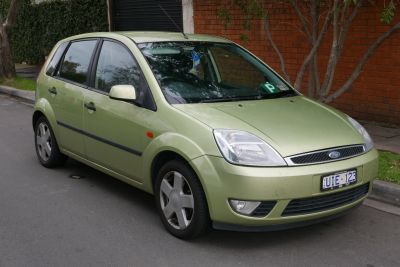
| Production: | 2001-2005 |
|---|---|
| Model Year: | 2002 |
| Length: | 3917 mm154.2 in |
| Width: | 1905 mm75.0 in |
| Height: | 1417-1463 mm55.8-57.6 in |
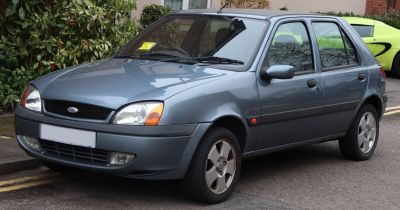
| Production: | 1999-2001 |
|---|---|
| Model Year: | 1999 |
| Length: | 3833 mm150.9 in |
| Width: | 1634 mm64.3 in |
| Height: | 1334 mm52.5 in |
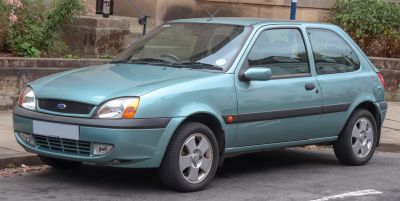
| Production: | 1999-2001 |
|---|---|
| Model Year: | 1999 |
| Length: | 3833 mm150.9 in |
| Width: | 1634 mm64.3 in |
| Height: | 1334 mm52.5 in |
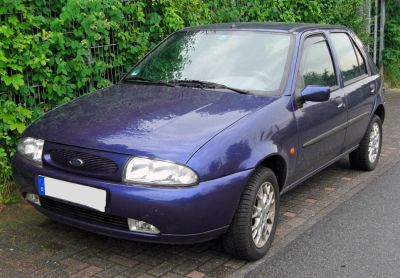
| Production: | 1996-1999 |
|---|---|
| Model Year: | 1996 |
| Length: | 3828 mm150.7 in |
| Width: | 1634 mm64.3 in |
| Height: | 1334 mm52.5 in |
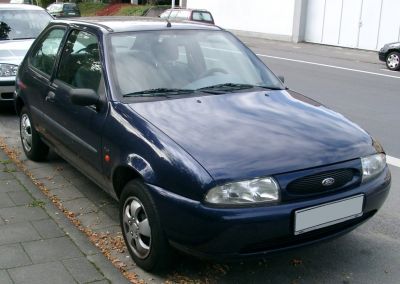
| Production: | 1996-1999 |
|---|---|
| Model Year: | 1996 |
| Length: | 3828 mm150.7 in |
| Width: | 1634 mm64.3 in |
| Height: | 1334 mm52.5 in |
